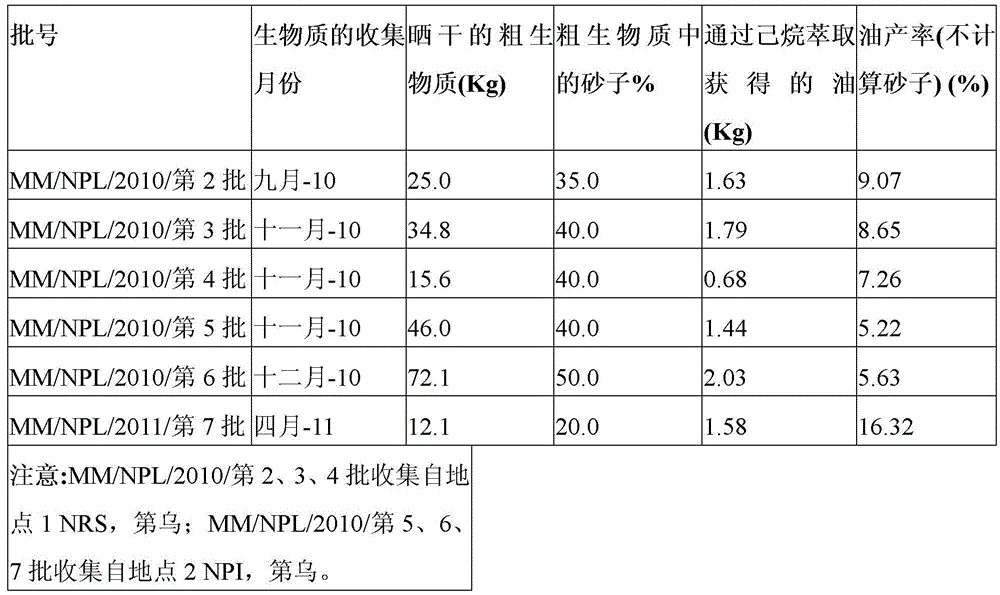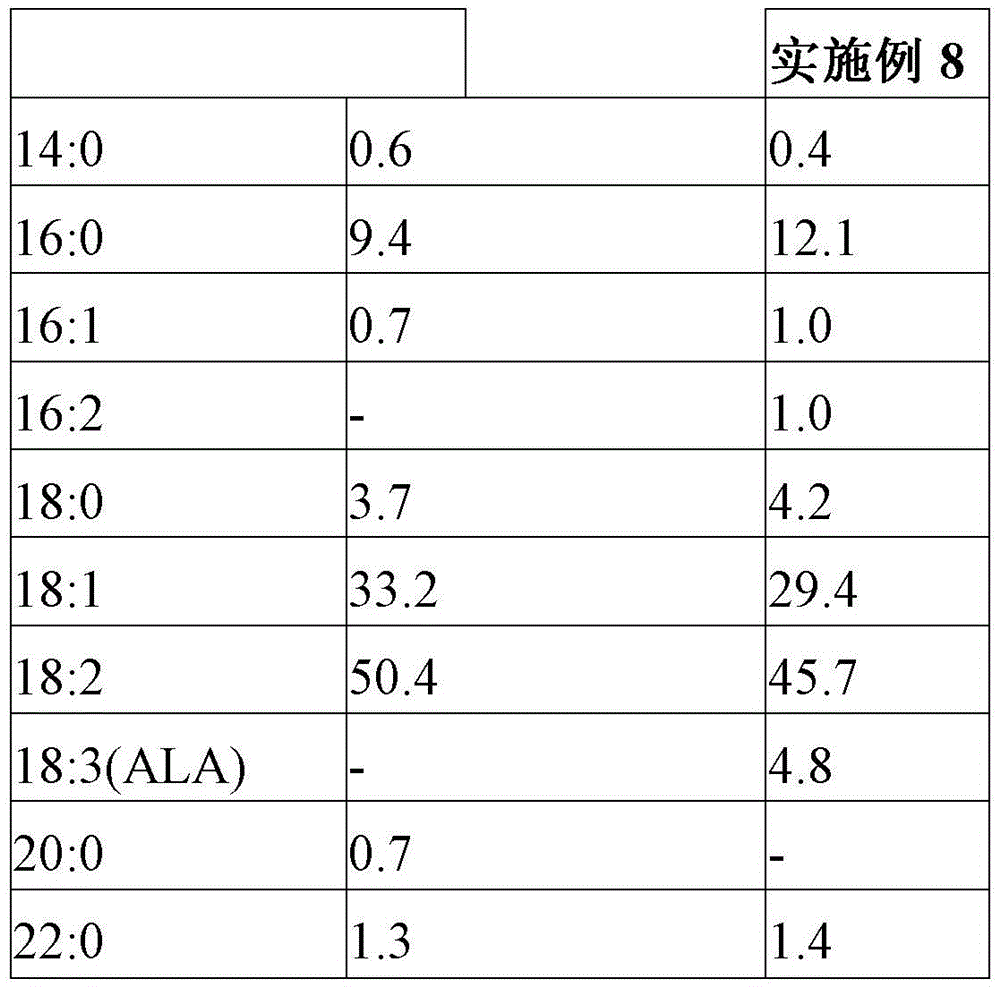Value Addition of Engine-Usable Fatty Acid Methyl Esters (Biodiesel) and By-Products from Naturally Occurring Marine Microalgae Populations and Marine Microalgae Cultivated in Open-air Salt Pans
一种脂肪酸甲酯、生物柴油的技术,应用在脂肪酸酯化、脂油/脂肪生产、生物燃料等方向,能够解决耗能等问题
- Summary
- Abstract
- Description
- Claims
- Application Information
AI Technical Summary
Problems solved by technology
Method used
Image
Examples
Embodiment 1
[0114] With the help of GoogleMaps TM , which looks for green spots in coastal waters, which can help us identify possible populations of floating microalgae. Some distinct green spots were found in the coastal areas of Goa (Madkai; 15°41.0616'N, 73°95.6227'E), Kerala (Vellanathuruthu Road; 9°01.6659'N, 76°52.5022'E), Bengal (PortCanning, 22°31.5577'N, 88°67.3307'E;, Dongajora, 22°13.2696'N, 88°60.2676'E; Haldiarefinery, 22°04.9408'N, 88°07.308'E), Diu (Nagoa Road Beside, 70□54.959'E, 20□42.391N) and Gujarat (Okha, 68□59.876', 22□23.975'). Ground-truth measurements were carried out at the sites identified in Diu and Gujarat, and indeed floating populations of green microalgae were found.
Embodiment 2
[0116] The algal populations of Example 1 were collected and observed under a microscope (Carl Zeiss AxioImager, 40x) for taxonomic identification. Both populations showed consortia of microalgae in which the Chlorophycae family predominated. The algae collected from 70□54.959'E, 20□42.391N had Microsporidium as the dominant form, while the algae collected from 68□59.876', 22□23.975' had Cladoides as the dominant form. Isolation of related species of the consortium was performed by using serial dilution methods. The seaweed algae were washed with distilled water to remove adhering dirt and impurities, and further centrifuged. Supernatants were collected and seeded in 24-well tissue culture plates with different media (BG-11, BBM, Zarrouk's, ASN-III, etc.). Serial dilutions were performed using a 1:10 dilution. Tissue culture plates were maintained at 25°C under artificial light (300 lux) with a 12 hour light and dark cycle. After visible growth, the enriched culture was st...
Embodiment 3
[0118] Naturally occurring populations of marine microalgae were selected from microalgae predominating at the site longitude 70°54.959'E and latitude 20°42.391N. The site was inspected regularly after 3-4 weeks to study regrowth of algal blooms. During the summer, the biomass production rate was 22.22g / m 2 / day and a total lipid content of 10%; during the monsoon, the biomass productivity was 6.03g / m 2 / day and a total lipid content of 9.61%, while in winter, 16g / m 2 / day biomass productivity and 12.85% total lipid content. This example teaches us that it is possible to harvest microalgal populations from nature in a sustainable manner.
PUM
 Login to View More
Login to View More Abstract
Description
Claims
Application Information
 Login to View More
Login to View More - R&D
- Intellectual Property
- Life Sciences
- Materials
- Tech Scout
- Unparalleled Data Quality
- Higher Quality Content
- 60% Fewer Hallucinations
Browse by: Latest US Patents, China's latest patents, Technical Efficacy Thesaurus, Application Domain, Technology Topic, Popular Technical Reports.
© 2025 PatSnap. All rights reserved.Legal|Privacy policy|Modern Slavery Act Transparency Statement|Sitemap|About US| Contact US: help@patsnap.com



